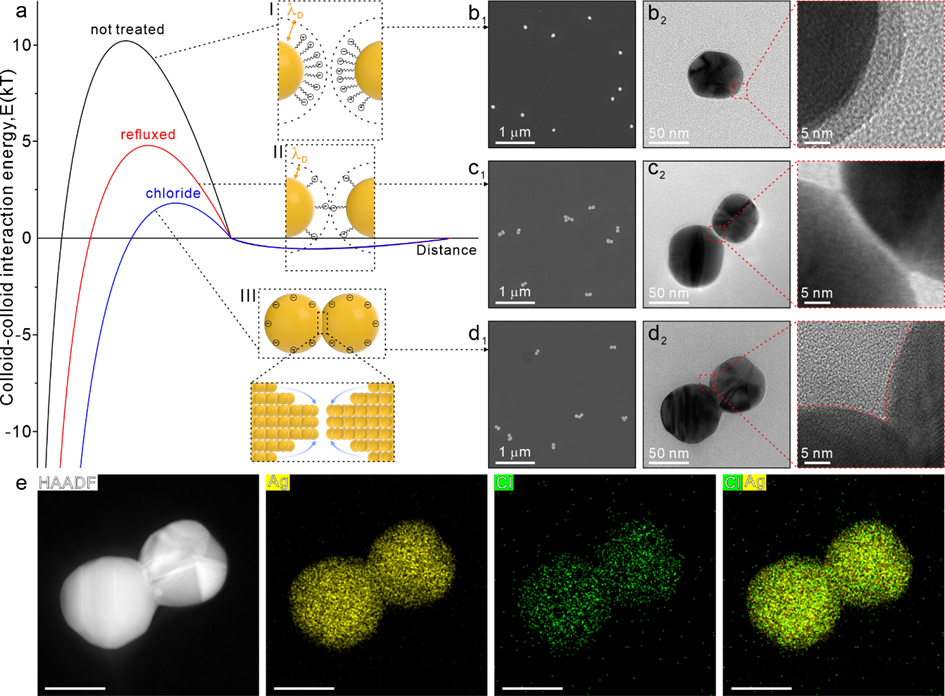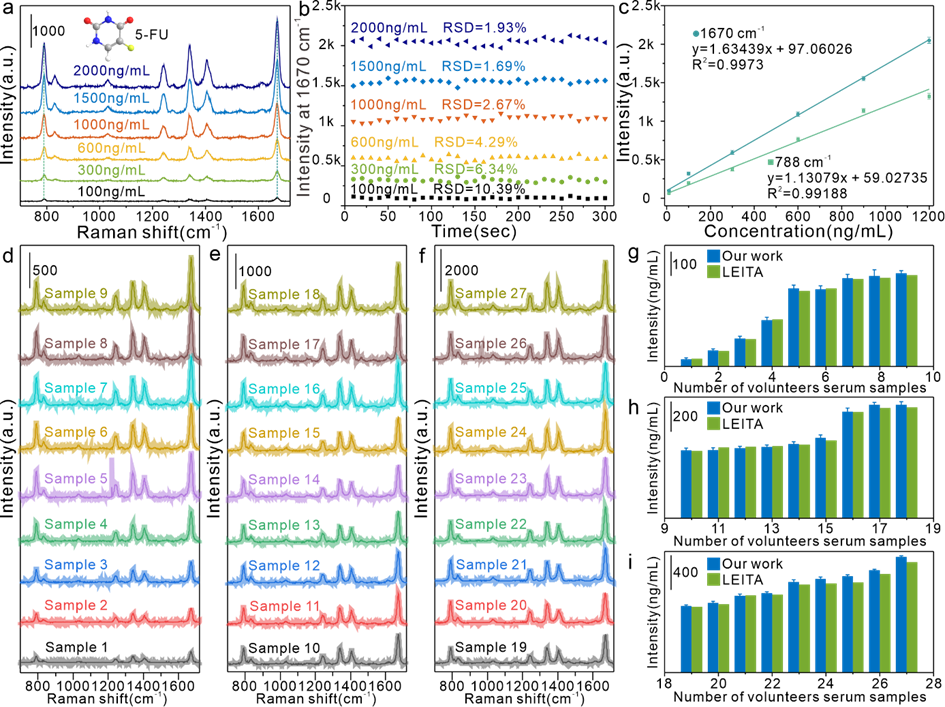Clean Yo-Yo Nanoparticles Boost SERS Sensitivity
A research team led by Prof. YANG Liangbao from the Institute of Nuclear Safety Technology,Hefei Institutes of Physical Science,Chinese Academy of Sciences,has introduced a new approach to fabricating clean,open-structured yo-yo-shaped nanoparticles in ultra-dilute colloids. This strategy,which combines solvent washing and chloride ion substitution,enables high-sensitivity and high-stability quantitative detection using Surface-Enhanced Raman Spectroscopy (SERS).
The study was recently published in Analytical Chemistry.
Traditional SERS techniques often rely on increasing the number or intensity of “hotspots” to amplify Raman signals. However, narrow interparticle gaps, surface ligand interference, and uneven electromagnetic field distribution can compromise signal consistency and sensitivity. The new study takes a different approach, demonstrating that expanding and homogenizing the electromagnetic field—while keeping enhancement moderate—can significantly improve quantitative reliability. At the same time, maintaining a clean, open nanoparticle surface ensures efficient entry of target molecules into the active “hot space.”
In this study,using solvent reflux and chloride ion exchange,the team removed surfactants such as sodium citrate from the nanoparticle surface. This resulted in clean,well-dispersed yo-yo-shaped nanoparticles with open hotspot regions. These structures allow analyte molecules to easily access the enhanced electromagnetic field,achieving high signal sensitivity and excellent stability even in ultra-dilute colloids.
The method proved highly effective in the quantitative detection of the chemotherapy drug 5-fluorouracil (5-FU). The nanoparticle colloids delivered a relative standard deviation of less than 10%,indicating excellent reproducibility. In blind tests involving serum samples from 27 cancer patients receiving 5-FU,the SERS approach achieved an impressive recovery rate of 101.25% compared to clinical gold-standard methods.
This work offers a promising strategy for real-time,accurate analysis of trace substances in liquid samples—such as drug monitoring and biofluid diagnostics—and provides a new design framework for plasmonic nanostructures through the concept of “hot space engineering.”
Article Link: https://pubs.acs.org/articlesonrequest/AOR-HFBJXGBKKNJX5N5KP24G

Figure 1. Ligand-mediated control of nanoparticle surface for particle assembly.

Figure 2. Stable and quantitative SERS detection of ultrasparse colloids.














